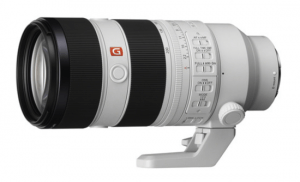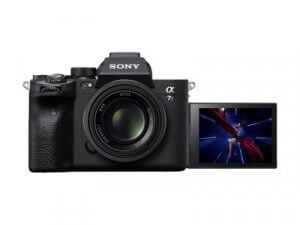 Sony Electronics announced the HDC-F5500 system camera, the latest entry in Sony’s HDC camera series, which boasts a highly sensitive Super 35mm 4K CMOS global shutter image that enables shallow depth of field.
Sony Electronics announced the HDC-F5500 system camera, the latest entry in Sony’s HDC camera series, which boasts a highly sensitive Super 35mm 4K CMOS global shutter image that enables shallow depth of field.
The new multi-format addition builds on the success and benefits of the industry standard HDC lineup and serves as a powerful tool for those in need of creative expression with a cinematic look, in a system camera form factor and workflow. Thanks to the global shutter effect to prevent rolling shutter distortion and flash band, and its high frame rate capability of 120fps, the HDC-F5500 is ideal for sports and live entertainment production. The camera’s high sensitivity and low noise also make it suitable for capturing dark scenes, which is especially beneficial for drama productions.
A first for a stylized S35mm system, the HDC-F5500 features a motorized 8-step ND filter adopted in Sony’s digital motion picture camera VENICE, which can be controlled locally or remotely, for increased operational flexibility. It also allows for the precise selection of focus depth as well as controlled capture of fast moving subjects even in bright lighting conditions. Another highlight of the new system is its wide color gamut. Support for BT.2020, S-Gamut3/S-Gamut3.cine and HLG enhance creativity and reality and match seamlessly with the color science driving Sony’s most in-demand cameras.
The new camera also provides numerous workflow enhancements for more efficient live production. The HDC-F5500 integrates with Sony’s IP Live production system through the use of the HDCU-5000 series, which supports SMPTE ST 2110 and AMWA NMOS standards. The HDC-F5500 can utilize the new IP extension adaptor HDCE-TX50 for remote production or multi-camera flight pack “CCU-Less” operation. The HDC-F5500 is also compatible with Sony’s existing SR Live for HDR workflow with HLG and S-Log3.
Additionally, the newly developed ARIA (Automatic Restoration of Illumination Attenuation) function, for select supported PL and zoom lenses, calibrates and compensates picture appearance when shooting at a distance.
Other features include a new viewfinder slide mechanism compatible with existing large viewfinders that minimizes the camera operator’s body movement while panning and allows for use in tight or challenging environments. The HDC-F5500 also has an ergonomic grip for handheld work, and a side tally lamp. 4K/12G-SDI direct output from the camera facilitates wireless operation and direct recording.
The HDC-5500 is planned to be available in December 2021.







